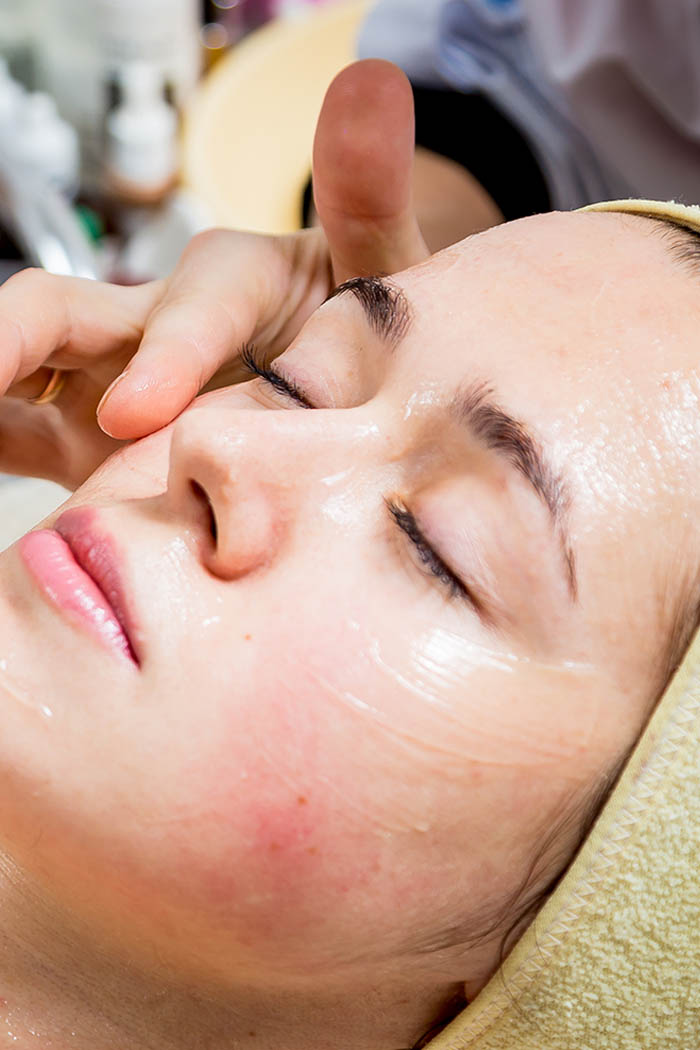What is microneedling?
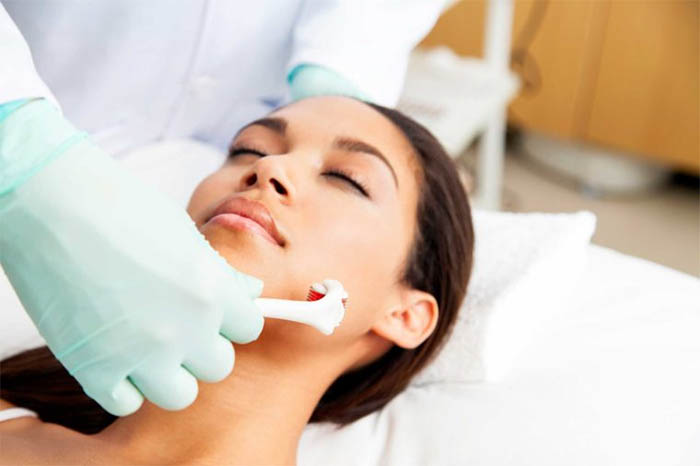 Microneedling (also known as collagen induction therapy) involves using fine needles to create hundreds of tiny, invisible puncture wounds in the top layer of skin. Sound appealing? Not so much. But this minimally invasive treatment—whether it’s done in-office by a trained aesthetician, dermatologist, or plastic surgeon, or at home using a dermaroller (a small, handheld paint roller coated in tiny needles)—is virtually painless and incredibly effective. “The micro-injuries you create stimulates the body’s natural wound healing processes, resulting in cell turnover and increased collagen and elastin production, therefore reversing as well as preventing signs of aging,” says board-certified dermatologist and RealSelf contributor Sejal Shah, MD. (It works the same way lasers do, only you’re injuring the skin mechanically instead of using heat or light.) Believe it or not, microneedling benefits caught the eye of skincare fanatics interested in anti-aging.
Microneedling (also known as collagen induction therapy) involves using fine needles to create hundreds of tiny, invisible puncture wounds in the top layer of skin. Sound appealing? Not so much. But this minimally invasive treatment—whether it’s done in-office by a trained aesthetician, dermatologist, or plastic surgeon, or at home using a dermaroller (a small, handheld paint roller coated in tiny needles)—is virtually painless and incredibly effective. “The micro-injuries you create stimulates the body’s natural wound healing processes, resulting in cell turnover and increased collagen and elastin production, therefore reversing as well as preventing signs of aging,” says board-certified dermatologist and RealSelf contributor Sejal Shah, MD. (It works the same way lasers do, only you’re injuring the skin mechanically instead of using heat or light.) Believe it or not, microneedling benefits caught the eye of skincare fanatics interested in anti-aging.
Microneedling reduces fine and deep wrinkles
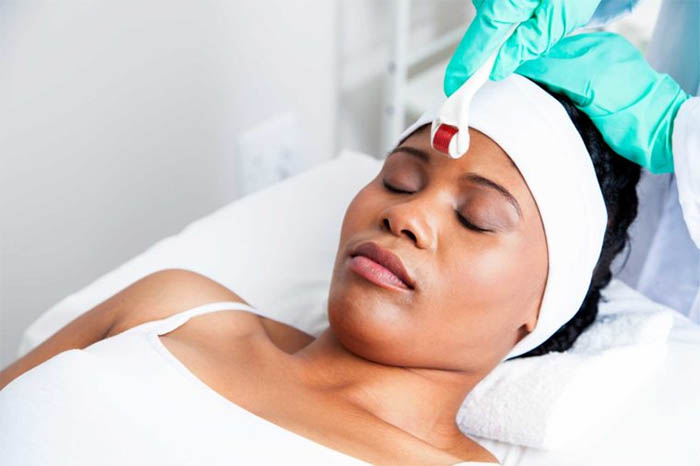 One of the main microneedling benefits is its ability to stimulate the growth of collagen and elastin, which is the key to new, youthful-looking skin. Some doctors would even go so far as to say that the procedure is the most powerful way to stop aging in its tracks and prevent new fine lines and wrinkles from forming. With its ability to trigger the generation of new skin cells, just a few sessions of microneedling will noticeably reduce fine lines, crow’s feet, and deep wrinkles on the forehead. “This is one of the reasons I like microneedling—because it’s able to utilize the body’s own natural healing mechanisms, so the results are very natural,” Dr. Shah says. “Also because there’s minimal downtime with it, I often recommend it as maintenance for people who are trying to stave off the signs of aging.” To treat wrinkles, a needle length no greater than 1.5-mm should be used.
One of the main microneedling benefits is its ability to stimulate the growth of collagen and elastin, which is the key to new, youthful-looking skin. Some doctors would even go so far as to say that the procedure is the most powerful way to stop aging in its tracks and prevent new fine lines and wrinkles from forming. With its ability to trigger the generation of new skin cells, just a few sessions of microneedling will noticeably reduce fine lines, crow’s feet, and deep wrinkles on the forehead. “This is one of the reasons I like microneedling—because it’s able to utilize the body’s own natural healing mechanisms, so the results are very natural,” Dr. Shah says. “Also because there’s minimal downtime with it, I often recommend it as maintenance for people who are trying to stave off the signs of aging.” To treat wrinkles, a needle length no greater than 1.5-mm should be used.
Microneedling repairs visible scars
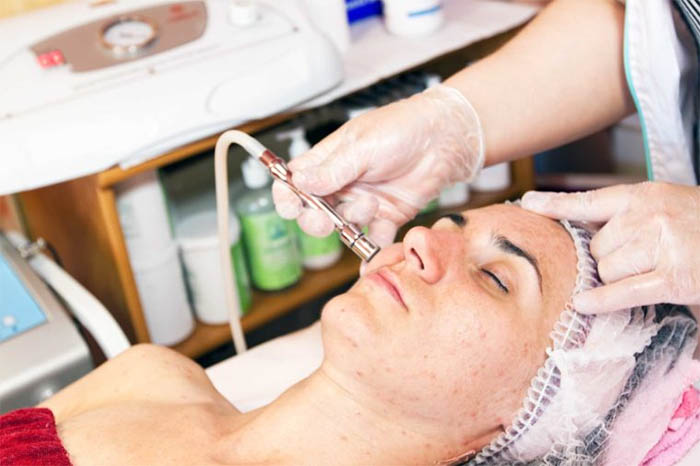 In a 2009 study on the effects of microneedling, nearly 100 percent of acne-scarred participants reported a marked improvement in the visibility of their acne scars. With at-home microneedling, a 1.5-mm handheld roller is long enough to improve the appearance of acne scars. However, for severe acne scars, you may need even longer needles for maximum results, so you’ll want to find a dermatologist or facialist who performs microneedle therapy treatments. Professional grade microneedling devices can be as long as 3 mm, which is twice as effective and will treat deep acne scars that occur beneath the surface of the skin. In case you’re wondering how microneedling compares to fractional laser treatments when it comes to resolving acne scars, a head-to-head comparison published in the journal Dermatologic Surgery in 2016, found both treatments to be comparable and effective but gave credit to microneedling for being better tolerated, with fewer side effects and less downtime.
In a 2009 study on the effects of microneedling, nearly 100 percent of acne-scarred participants reported a marked improvement in the visibility of their acne scars. With at-home microneedling, a 1.5-mm handheld roller is long enough to improve the appearance of acne scars. However, for severe acne scars, you may need even longer needles for maximum results, so you’ll want to find a dermatologist or facialist who performs microneedle therapy treatments. Professional grade microneedling devices can be as long as 3 mm, which is twice as effective and will treat deep acne scars that occur beneath the surface of the skin. In case you’re wondering how microneedling compares to fractional laser treatments when it comes to resolving acne scars, a head-to-head comparison published in the journal Dermatologic Surgery in 2016, found both treatments to be comparable and effective but gave credit to microneedling for being better tolerated, with fewer side effects and less downtime.
Microneedling reverses sun damage and pigmentation
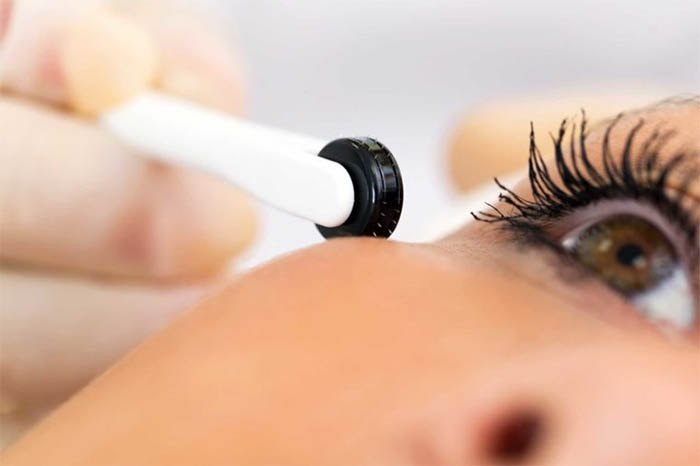 Once again, collagen is arguably the most vital way to improve the look of skin, and this goes far beyond reducing wrinkles. By stimulating collagen growth with microneedling, you can also reverse sun damage and discoloration, including the hyperpigmentation that comes with melasma. A 2015 study showed microneedling to be a promising treatment for the blotchy, brownish facial pigmentation that comes with this chronic condition. To improve extra pigmentation from sun-damaged skin, your dermaroller needles should range between 1.0 mm an 1.5 mm in length. Beauty guru Rachel Zoldan writes that after only a few microneedling sessions, her skin was clear and glowing despite too many summers in the sun.
Once again, collagen is arguably the most vital way to improve the look of skin, and this goes far beyond reducing wrinkles. By stimulating collagen growth with microneedling, you can also reverse sun damage and discoloration, including the hyperpigmentation that comes with melasma. A 2015 study showed microneedling to be a promising treatment for the blotchy, brownish facial pigmentation that comes with this chronic condition. To improve extra pigmentation from sun-damaged skin, your dermaroller needles should range between 1.0 mm an 1.5 mm in length. Beauty guru Rachel Zoldan writes that after only a few microneedling sessions, her skin was clear and glowing despite too many summers in the sun.
Microneedling helps aging skin
 On top of microneedling’s ability to smooth and correct damaged skin, it also has the added bonus of tightening loose skin, which makes it great for older men and women. (Remember: The older you are, the less collagen you’re naturally producing.) A 2015 study in the International Journal of Dermatology confirms that microneedling is a new way to achieve “skin rejuvenation, tightening, and scar remodeling,” and that it offers a “simple and effective treatment for photo aged skin” with minimal side effects and downtime.
On top of microneedling’s ability to smooth and correct damaged skin, it also has the added bonus of tightening loose skin, which makes it great for older men and women. (Remember: The older you are, the less collagen you’re naturally producing.) A 2015 study in the International Journal of Dermatology confirms that microneedling is a new way to achieve “skin rejuvenation, tightening, and scar remodeling,” and that it offers a “simple and effective treatment for photo aged skin” with minimal side effects and downtime.
Microneedling shrinks pores
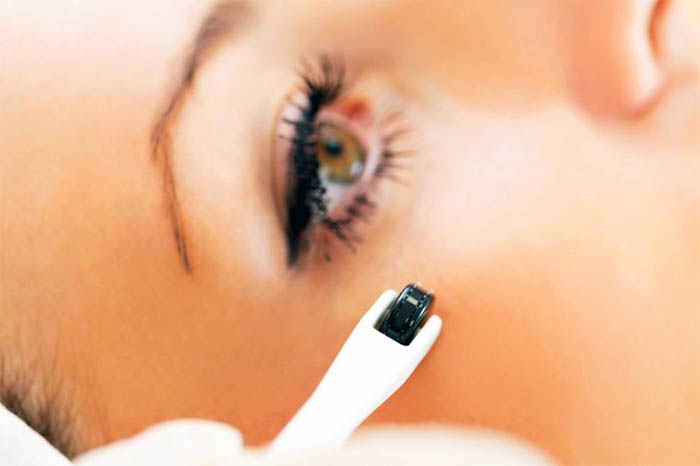 It’s a bit counter-intuitive, but microneedling doesn’t actually enlarge pores as you might imagine piercing your skin hundreds of times would. Rather, one major microneedling benefit, or benefit of using a dermaroller, is that it helps pores appear much smaller. Microneedling stimulates collagen in and around your pores, which causes them to plump and appear shrunken, if not closed. And let’s be honest, who doesn’t want smaller pores?
It’s a bit counter-intuitive, but microneedling doesn’t actually enlarge pores as you might imagine piercing your skin hundreds of times would. Rather, one major microneedling benefit, or benefit of using a dermaroller, is that it helps pores appear much smaller. Microneedling stimulates collagen in and around your pores, which causes them to plump and appear shrunken, if not closed. And let’s be honest, who doesn’t want smaller pores?
Microneedling makes your products work better
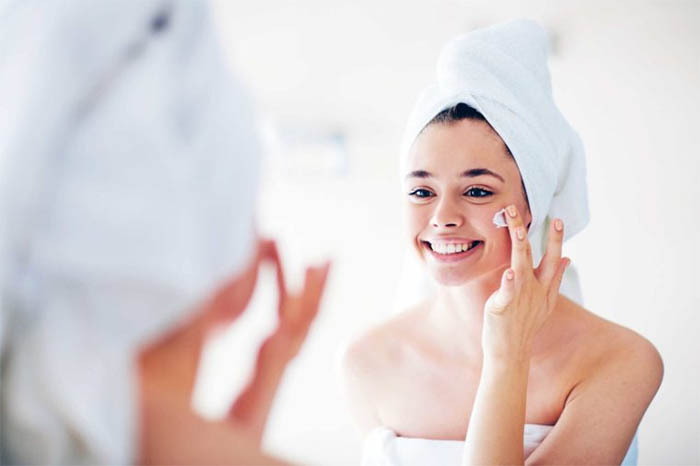 Did you know that only 4 to 8 percent of that expensive serum you’re using on your face actually penetrates your skin? Another microneedling benefit is that it improves product absorption tremendously. Studies confirm that the treatment can actually help topical medications penetrate skin more efficiently, allowing you to reap the full benefits of any product. This makes total sense considering the fact that microneedling creates thousands of invisible holes in your skin that are ready to absorb products in a way clogged pores can’t. “The tiny punctures actually act like little channels, allowing topical products to penetrate better and work more effectively,” Dr. Shah says. Give your skin a refresh throughout the day with a hydrating mist. We found the best facial mist for your zodiac sign.
Did you know that only 4 to 8 percent of that expensive serum you’re using on your face actually penetrates your skin? Another microneedling benefit is that it improves product absorption tremendously. Studies confirm that the treatment can actually help topical medications penetrate skin more efficiently, allowing you to reap the full benefits of any product. This makes total sense considering the fact that microneedling creates thousands of invisible holes in your skin that are ready to absorb products in a way clogged pores can’t. “The tiny punctures actually act like little channels, allowing topical products to penetrate better and work more effectively,” Dr. Shah says. Give your skin a refresh throughout the day with a hydrating mist. We found the best facial mist for your zodiac sign.
Microneedling can be done all over your body
Finally, an awesome microneedling benefit is that this treatment isn’t exclusive to the face. It can be done on any area of skin that needs to be repaired—particularly areas that display stretch marks or acne scars, like the legs, chest, back, and butt. As few as four to six sessions could make a difference in these problem areas. Next, find out 20 things your skin can reveal about your health.

